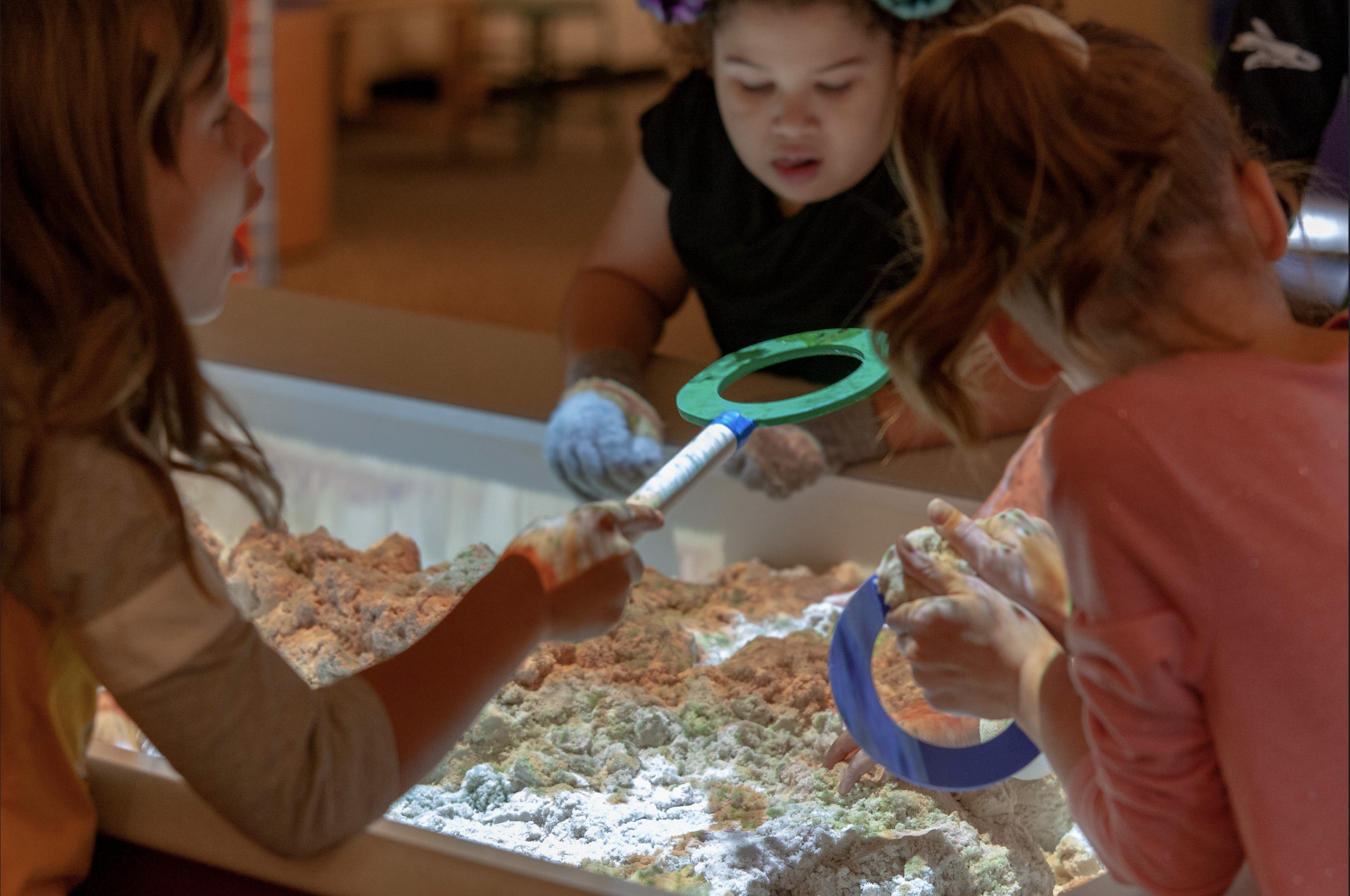
One of my earliest memories from science classes in school is creating a weather journal tracking the different types of weather over time.. It was as simple as ‘rainy’, ‘sunny’, ‘cloudy’, etc., but it was one of my favorite things to do because I got to create to my heart’s content with whatever materials I could find- cotton balls for clouds, construction paper for the sun, paint for the rain, etc. As I grew up and really began understanding what climate change is and how I am being affected by these shifts, my interests renewed into a fascination for personal sustainability in my own life. I’ve never considered myself a scientist, but one thing I’ve always loved to do is work with my hands, use my imagination, and try to make a difference. That’s why my favorite exhibit at Wonderlab is SandScapes – an exhibit where you can learn about different climates using your imagination, in a way where you create a story visually and with your hands!
What is SandScapes?
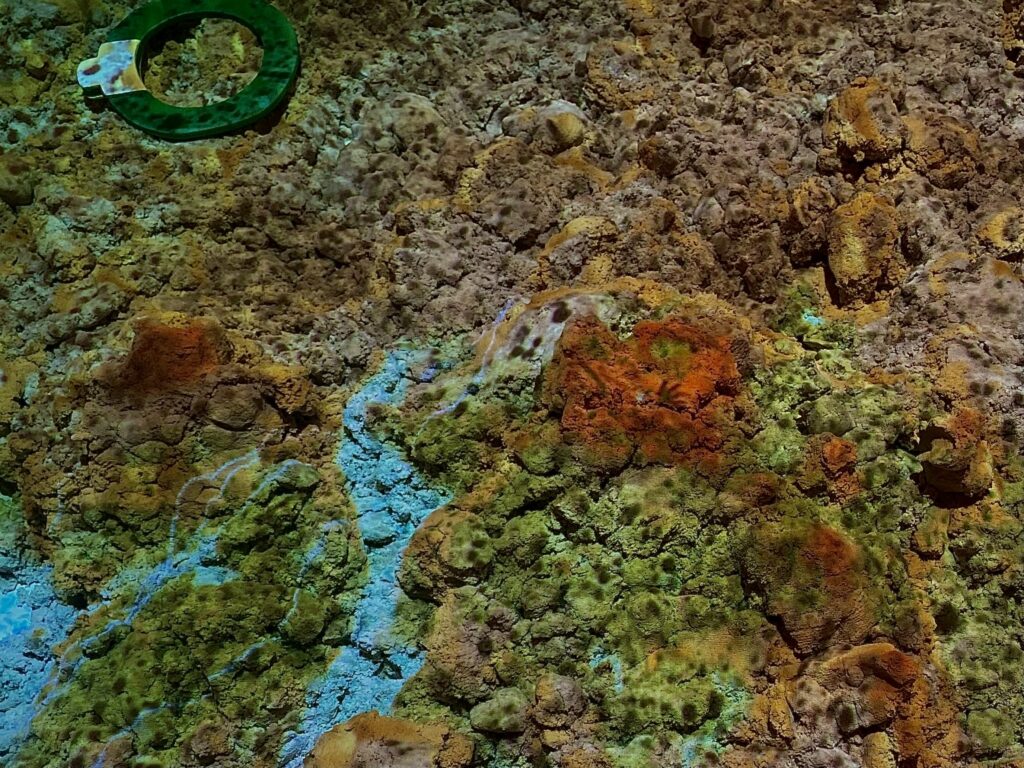
SandScapes looks like a sandbox, with a special twist. Using AR/VR technology, different climate biomes are projected onto the sand. The visual changes based on how the sand is manipulated, creating a live and interactive experience to learn.
The different projected biomes show different climate biomes such as the Appalachian Mountains, the Arctic, the Desert, the Rocky Mountains, and Tropics. There is even one that shows Bloomington, Indiana! There is also a projection that illustrates elevation with color bands, showing how extreme topography can be. The color elevation projection is my personal favorite because of how pretty it can look! 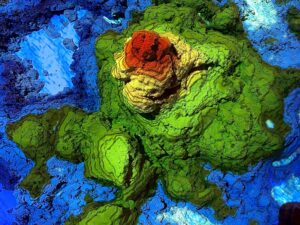
Using rain sticks (circular shaped items), you can create “virtual rain” that falls over the structures you’ve built out of sand. Moving this rain stick above the sand causes the images to shift and move in a way that is unique to each biome. In the desert biome, the virtual water turns the plants green and then evaporates. In the Appalchian biome, the virtual rain becomes a river flowing through a valley of forests, complemented with the sound of rushing water.
What is a Biome?
A biome is a large expanse that is defined by its climate, soil, plants, and animals. There are 5 major types of biomes on earth: aquatic, grassland, forest, desert, and tundra. These can be further classified into more specific categories, like savanna or tropical. Scientists categorize the world into different biomes because each biome has specific plants, animals, and other organisms that interact with each other in unique ways. Even one change to any of these aspects can disrupt the whole ecosystem.
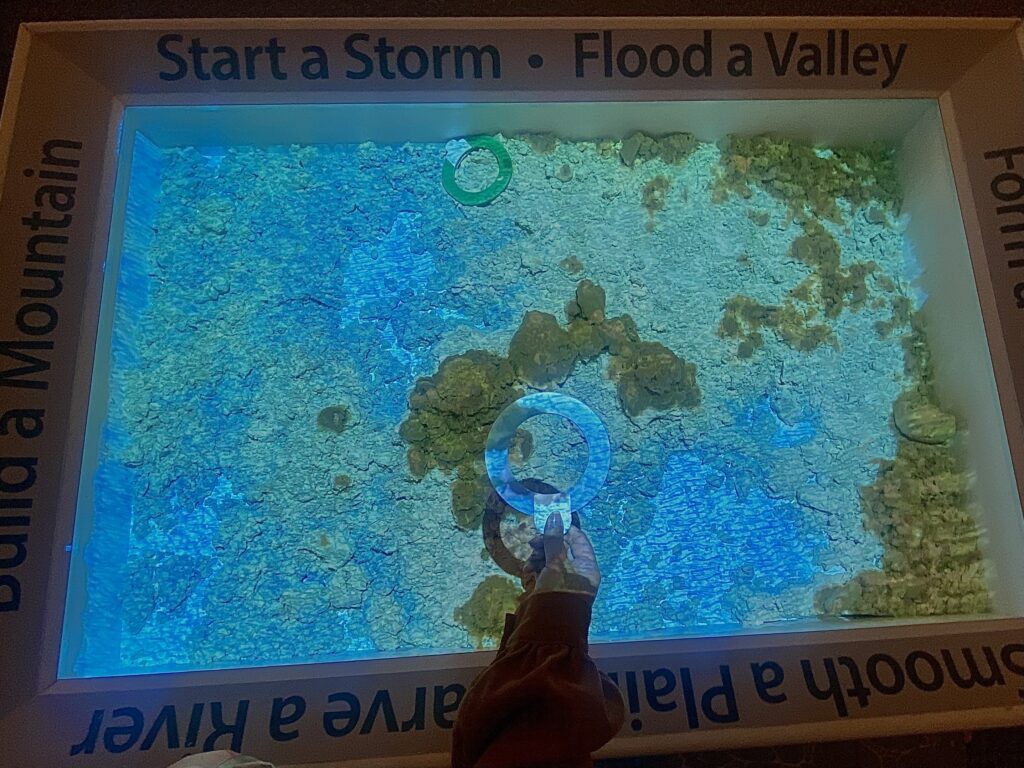
The conservation and preservation of these biomes is important. What occurs in each biome impacts the overall world climate. For example, aquatic biomes are considered to be the most important factor in the world’s climate and health because water is the number one major natural resource. Water supports all life functions, ranging from drinking water to irrigation for farming and more. Additionally, these bodies of water contain several billion photosynthetic plankton, which help provide the Earth with oxygen. With the threats of pollution to these major biomes, there could be hugely disruptive effects to our planet. Understanding the different biomes and how they can be affected , helps us make better choices for sustainability, to ensure the preservation and health of these different regions.
The Biome of Bloomington
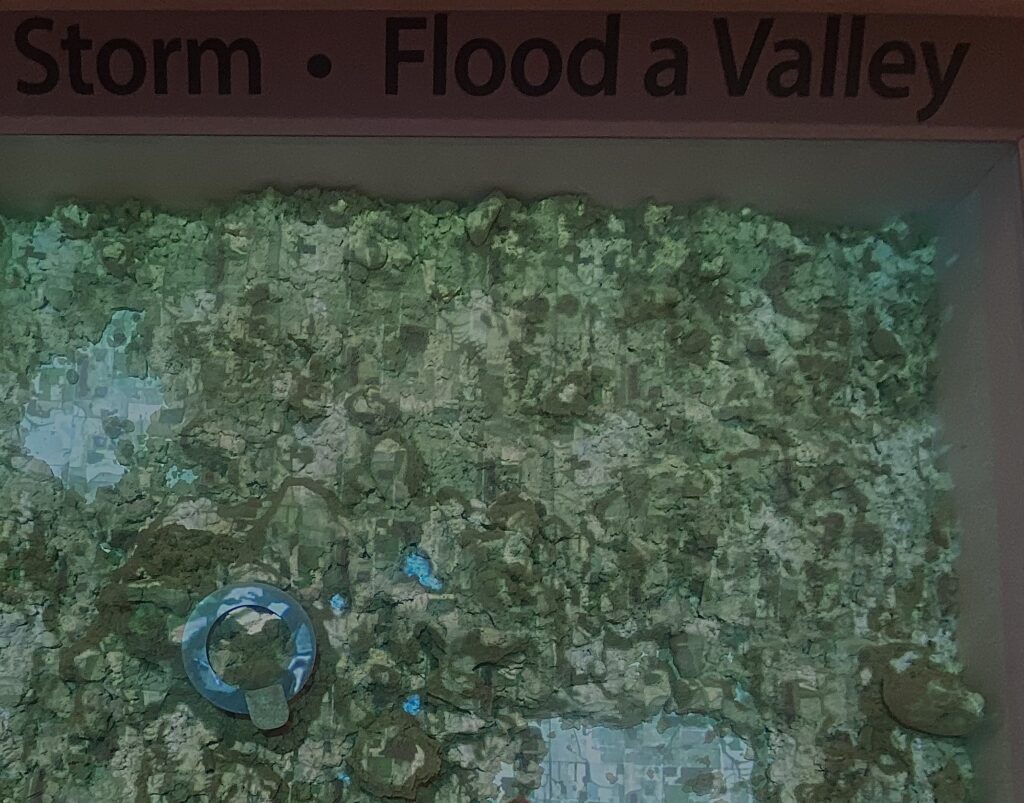
Bloomington, Indiana is part of a temperate deciduous forest biome in eastern North America. This means that Bloomington has a variety of different types of trees, shrubs, bushes, and a mossy ground layer. Bloomington has an average amount of rainfall to support the growth of the trees and also experience four distinct seasons, ranging from the warm summers to the colder, but still moderate, winters. Additionally, Bloomington is home to many hilly areas, ravines, underground caves, and more due to the path of historical glacier movement. Thousands of years ago, the glaciers stopped their movement just before reaching Southern Indiana, so the geography was able to develop into these types of phenomena that makes Bloomington so special.
The Unforgettable Experience
SandScapes is one of my favorite exhibits because I can feel the sand with my hands, see the colors and elevations, and hear the sound effects unique to each biome. I can clearly imagine what each biome is like. SandScapes is an exhibit that doesn’t just engage your sense of touch, but also sight and sound in ways that you may not predict; that’s why I enjoy this exhibit.
About the Author

Shilpi Jena is 20 years old and is a sophomore at Indiana University and interning at WonderLab as part of the Marketing/PR team to gain experience for her marketing major. In her free time, Shilpi loves enjoying nature, reading, and obsessing over music!


Leave A Comment